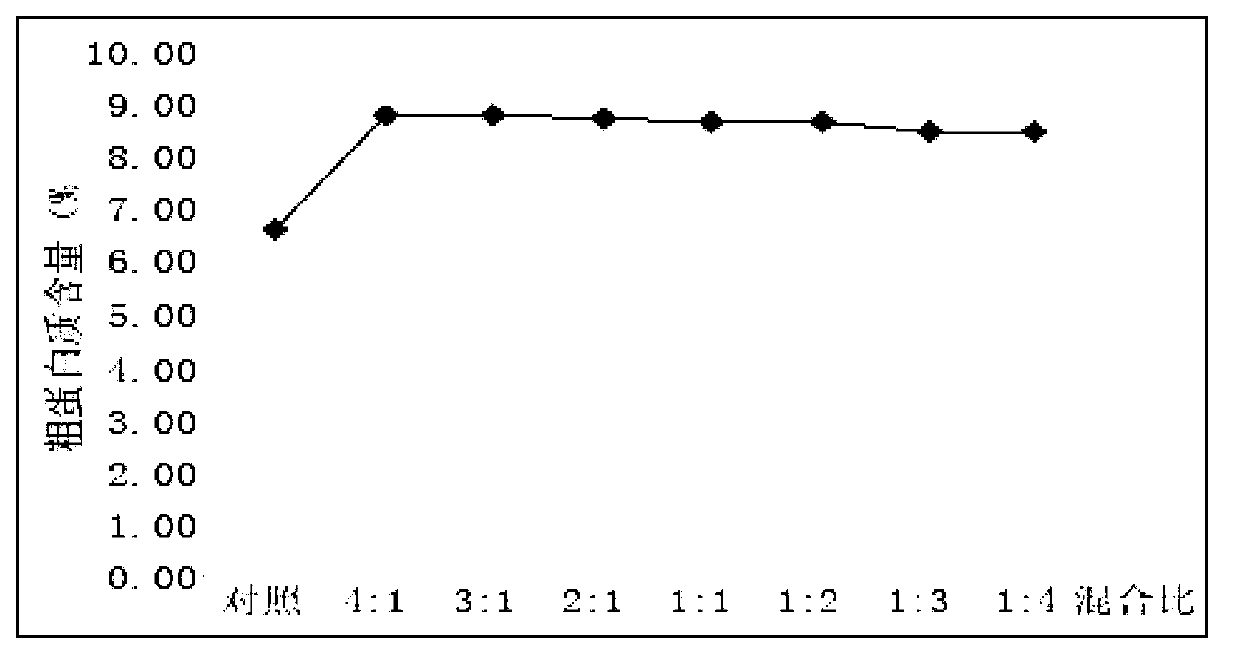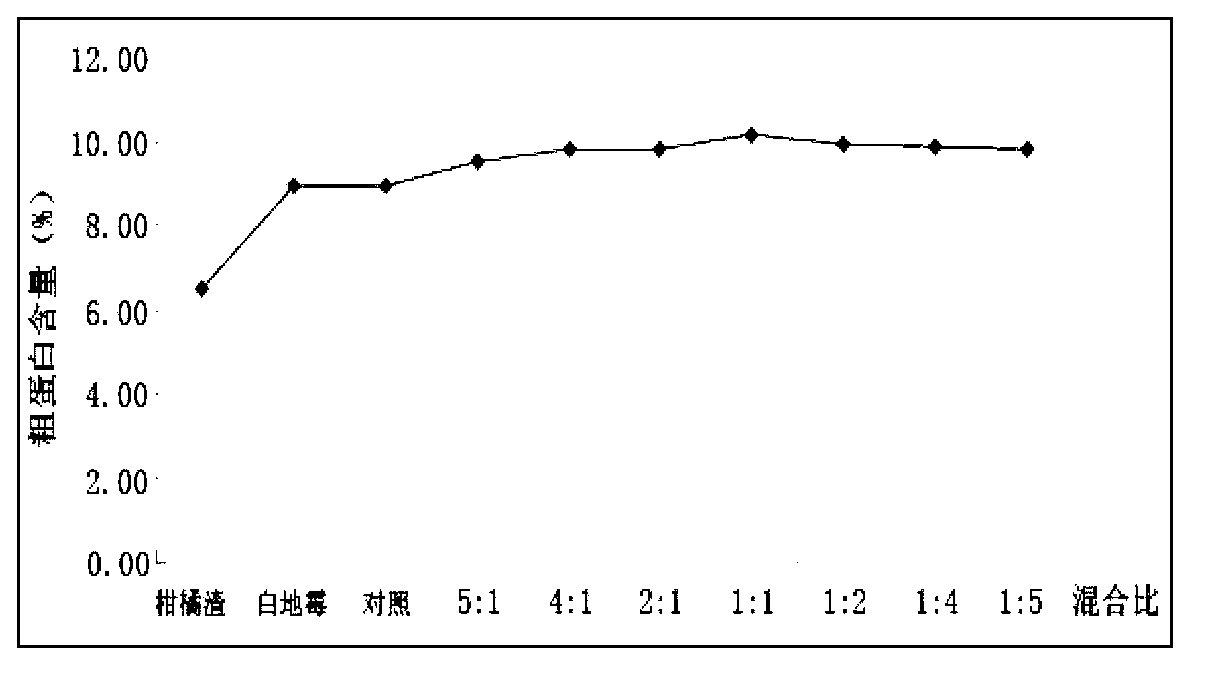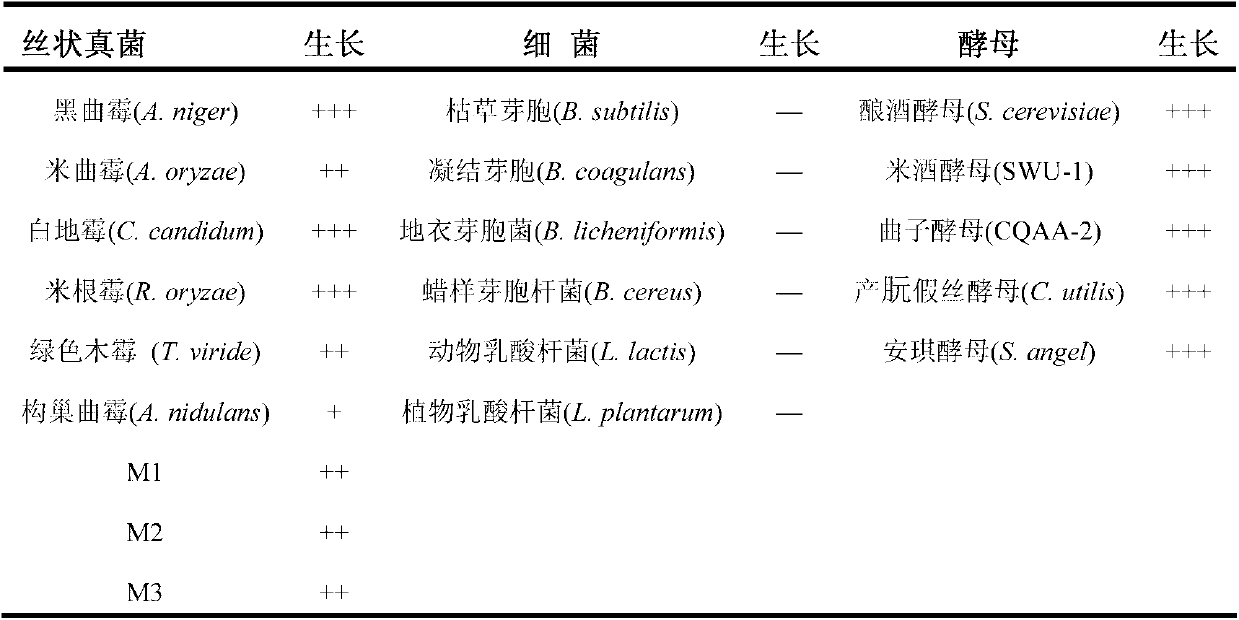Dewatered solid combined inoculant for increasing protein level of citrus pulp feed and preparation method of dewatered solid combined inoculant
A technology of combining inoculants and inoculants, which is applied in microorganism-based methods, animal feed, animal feed, etc., can solve the problems of increasing the cost of animal husbandry and feed, and achieve the effects of increased protein content, convenient use and low cost.
- Summary
- Abstract
- Description
- Claims
- Application Information
AI Technical Summary
Problems solved by technology
Method used
Image
Examples
Embodiment 1
[0040] Example 1 bacterial classification and citrus pomace co-cultivation
[0041] The co-cultivation of strains and citrus pomace is mainly carried out according to the method of plate spotting experiment, and the strains most suitable for the growth of citrus pomace are screened. Plate seed test reference "Chen Song, Ding Lixiao, Zhang Li, Wang Tianlong, Zhu Yinglian, 2008. Screening of mixed strains for fermenting apple pomace to produce protein feed [J]. Food and Fermentation Industry, 2008, 34(2): 94-96" execution. The reference for the preparation of the citrus pomace plate medium "Liu Shuli, 2008.D Research on strain screening to increase the crude protein content of citrus pomace fermented feed" was carried out, and appropriate improvements were made. Citrus pomace-restricted plate medium is: 3 g of citrus pomace, 2 g of agar, 100 mL of nutrient solution, sterilized at 115 ° C for 20 minutes, mixed evenly and poured onto the plate; the nutrient solution preparation (...
Embodiment 2
[0045] Example 2 Two strains combination and citrus pomace co-cultivation
[0046] Aspergillus niger is a microbial strain considered safe by the Association of American Feed Control Officials (AAFCO, 1991). It is used for the production of enzyme preparations (protease, amylase, pectinase) and agriculturally for the production of saccharified feed strains. Therefore, Aspergillus niger was selected as the indicator bacteria for combination research. With Aspergillus niger as indicator bacterium, the bacterium liquid (the filamentous fungus that adapts to citrus residues mentioned in embodiment 1) of equal amount of same concentration is planted to embodiment 1 and mentions the symmetry line of citrus residues restriction plate culture medium two At equidistant positions on the side, culture at 28°C-30°C for 7 days, and continuously observe and record the growth of the colonies on the plate. Select the combination of strains with good growth and compatible coexistence and yea...
Embodiment 3 3
[0051] Example 3 Three-bacteria combination and co-cultivation of citrus pomace
[0052] Spread the various yeast liquids mentioned in Example 1 with equal amounts of the same concentration on the citrus pomace restriction plate medium, and use the combination of A.niger+C.candidum and A.niger+R.oryzae screened in Example 2 Bacteria are spotting strains, planted at equidistant positions on both sides of the symmetry line of the yeast plate medium, cultured at 28°C-30°C for 7 days, and continuously observed and recorded the growth of the colonies on the plate. Coexisting three-bacteria combination.
[0053] The results showed that Rhizopus oryzae and yeast in A. niger+R. oryzae combination (A. niger+R. oryzae) did not grow in mixed culture, which was a poor three-bacteria combination, and it was not suitable for in-depth research. However, when the combination of Aspergillus niger + Geotrichum candidum (A.niger+C.candidum) was mixed with yeast strains, the yeast had different ...
PUM
 Login to View More
Login to View More Abstract
Description
Claims
Application Information
 Login to View More
Login to View More - R&D
- Intellectual Property
- Life Sciences
- Materials
- Tech Scout
- Unparalleled Data Quality
- Higher Quality Content
- 60% Fewer Hallucinations
Browse by: Latest US Patents, China's latest patents, Technical Efficacy Thesaurus, Application Domain, Technology Topic, Popular Technical Reports.
© 2025 PatSnap. All rights reserved.Legal|Privacy policy|Modern Slavery Act Transparency Statement|Sitemap|About US| Contact US: help@patsnap.com



